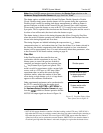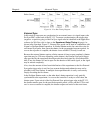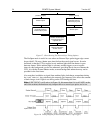
Chapter 5 Operation 49
This technique is also useful in high light level experiments, where the camera is again
photon shot-noise limited. Summing multiple pixels in software corresponds to
collecting more photons, and results in a better S/N ratio in the measurement.
Background Subtraction
Each CCD has its own dark charge pattern or background that can be subtracted from the
total acquired signal. By subtracting this background, you can eliminate the dark charge,
which might otherwise hide low-intensity signal.
To set up for background subtraction, set up the experiment conditions for acquiring the
actual image (detector temperature, exposure time, region of interest, timing mode, etc.)
and then, while blocking the incoming signal from the array, acquire a dark charge
“background image” under those conditions. Once the background image is acquired,
save it to disk.
After storing the background to disk, you have two choices for background subtraction:
automatic or post-processing.
Automatic: This approach requires that you activate "Background" and specify the
background filename on the Acquisition| Experiment Setup|Data Corrections
tab page before acquiring an image. When you acquire an image, the specified
background file data will automatically be subtracted from the raw image data before
the corrected data is displayed and is available for storage to disk.
Post-Processing: If you prefer to acquire and preserve the raw image data, make
sure that "Background" is not active on the Acquisition|Experiment Setup|Data
Corrections tab page. Then, acquire the image, save the raw image data to disk,
and, via the Image Math function, subtract the background file data from the raw
image data. The subsequent data can then be saved to a separate file.
Digitization
Introduction
After gain has been applied to the signal, the Analog-to-Digital Converter (ADC)
converts that analog information (continuous amplitudes) into a digital data (quantified,
discrete steps) that can be read, displayed, and stored by the application software. The
number of bits per pixel is based on both the hardware and the settings programmed into
the camera through the software (refer to "Readout", page 46).
Factors associated with digitization include the digitization rate and baseline signal.
Depending on the camera model, you may be able change the speed at which digitization
occurs and/or offset the baseline. These factors are discussed in the following
paragraphs.
Digitization Rate
During readout, an analog signal representing the charge of each pixel (or binned group
of pixels) is digitized. The number of bits per pixel is based on both the hardware and the
settings programmed into the camera through the software.


















